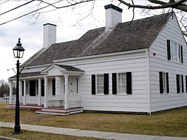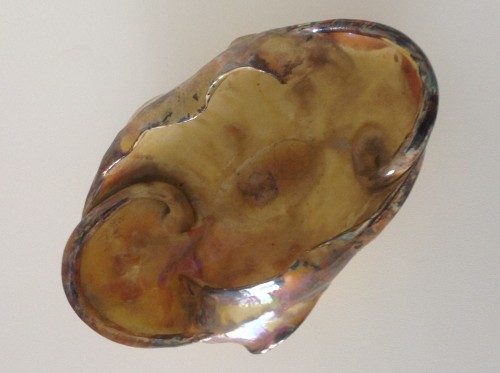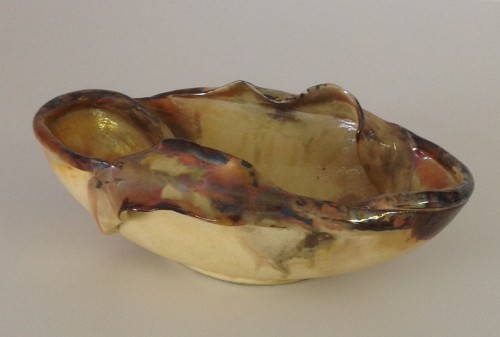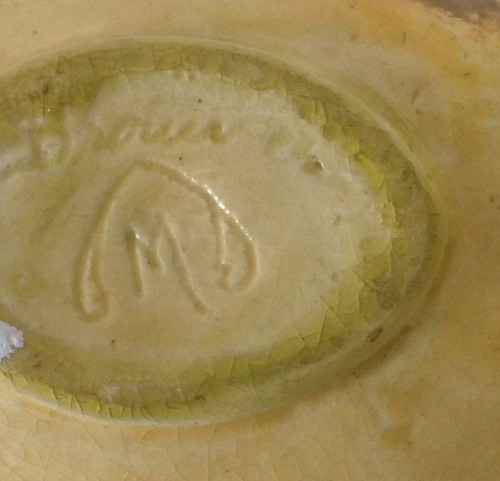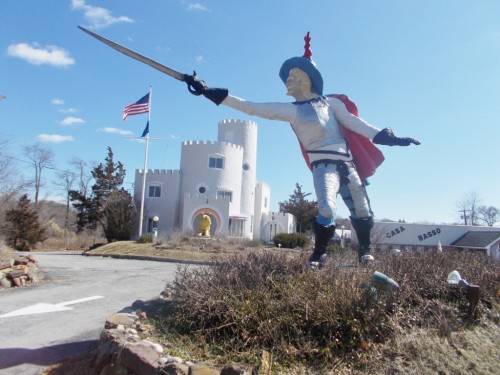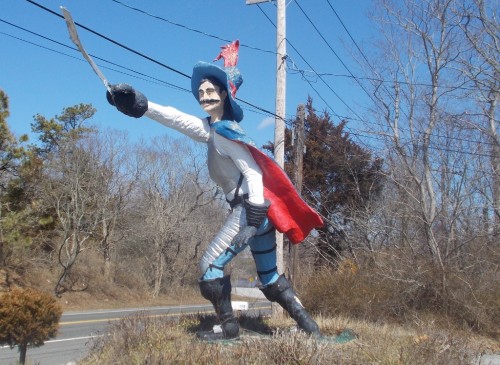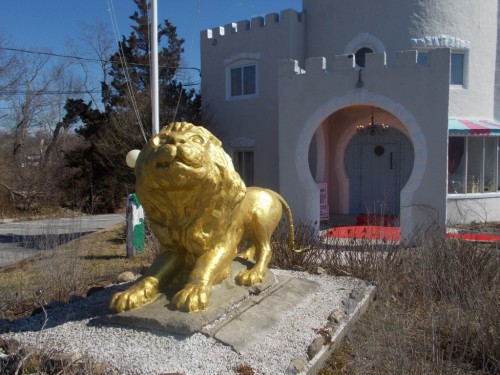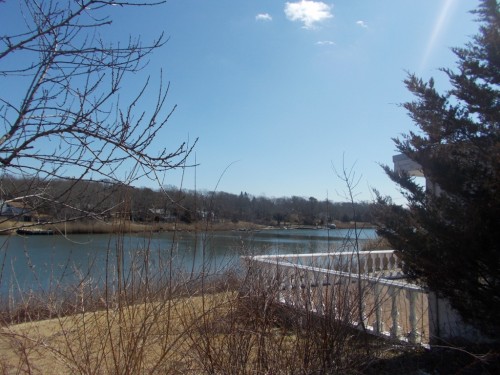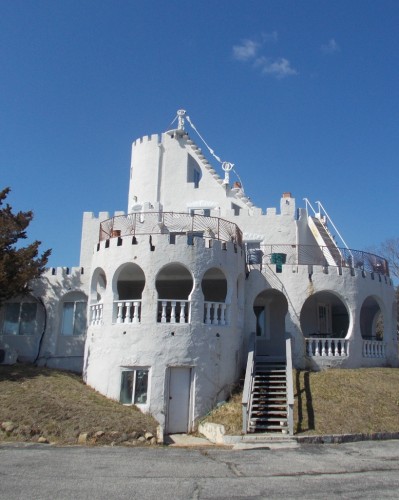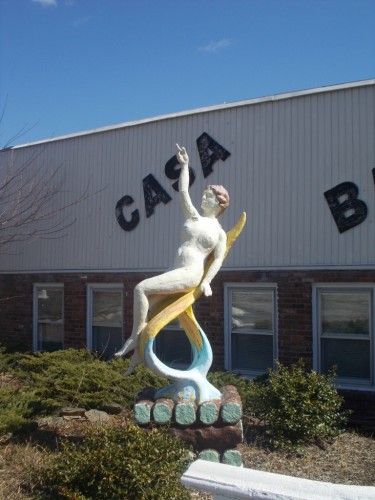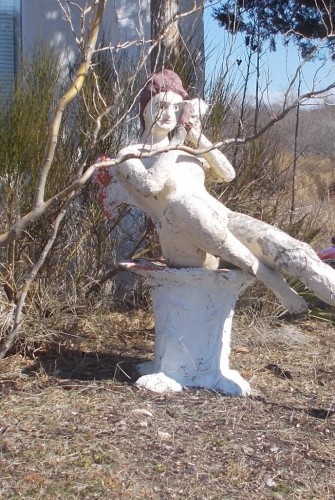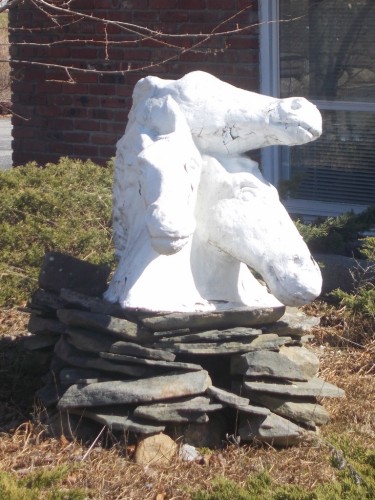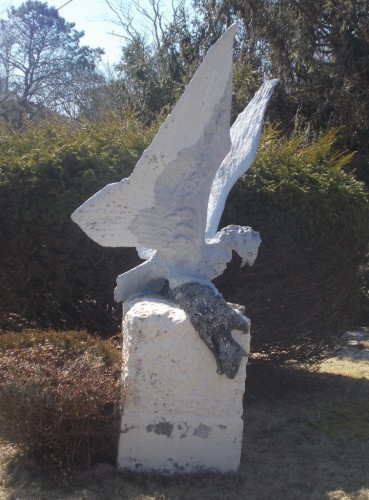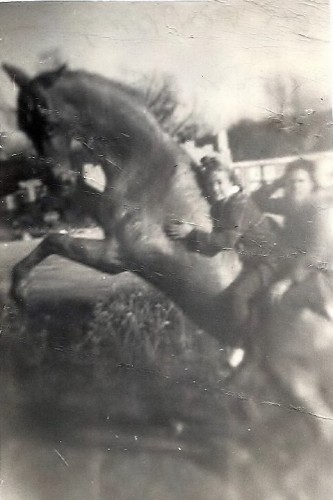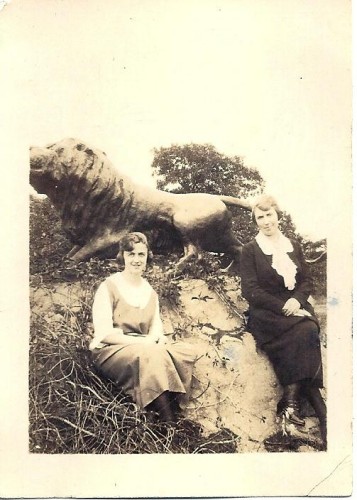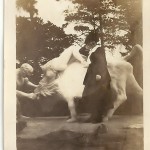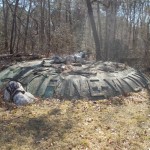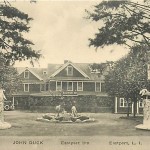Long Island is known for windmills, not castles, so of course a building as unique as The Castle on Montauk Highway in Westhampton has become well known on the East End.

Although The Castle is famous, and the associated restaurant Casa Basso quite popular, even locally the castle’s designer and original owner is not so well known. The Quo Vadis? inspired statue shown above, created by the castle’s original owner, is even less known. Keep reading for more details…
The castle was built by a very talented man by the name of Theophilus Brouwer (1864-1932). Brouwer was a noted sculptor, woodcarver, architect, oil painter, and potter. Many people today don’t realize that the castle was once the site of Brouwer’s pottery studio. Brouwer created a unique way of firing his pots to achieve quite beautiful pottery. His exact methods are still not known today. His “flameware” pieces were his signature style. Among pottery workers and collectors today his work is considered quite valuable. It is said that any collector of pottery of the Arts & Crafts Movement would not have a complete collection without at least one piece of Theophilus Brouwer’s work. We were fortunate enough to be the recipient of one of Brouwer’s pieces for our museum. The piece is a lovely oval swirled candy dish and is signed with his trademark – arched whale bones with an M inside.
Although his pottery is becoming more difficult to find, it is quite easy to see some of his other artistic efforts. There is a collection of his statues outside the Castle and the Casa Basso Restaurant, which is on the same property. The statues include the most famous, two 12 foot tall musketeers that guard the entrance, as well as a rearing horse, a lion, a snake, a fairy, a wrestler and numerous others. These days the musketeers, the lion, and the horse are well cared for and repainted every few years, yet some of the other statues are in need of some T.L.C. so don’t delay coming see them.

Additionally, there are two well-known monuments in the area that Brouwer designed, both dedicated to WWI’s fallen soldiers. The first, dedicated in 1923, is a spectacular bald eagle with outspread wingssitting upon a large half globe. The plaque 0n the monument was designed in the shape of the Congressional Medal of Honor and lists the names of some 21 soldiers and two nurses from East Moriches who died while serving in World War I. At 20 foot from wing tip to wing tip and 15 feet high, this was the largest carved eagle in the world at the time it was created. The impressive eagle made a memorable monument at the entrance to the Moriches School for more than 60 years. Eventually the old school was torn down, yet the monument remains in place having been beautifully restored in 1973, and respectfully maintained to this day.
The second monument also sits in front of a school – this one the Eastport School on Montauk Highway. This monument is the statue of a WWI soldier standing on a globe while holding an American Flag. When viewed up close, you can see that the soldier is standing to span the ocean. The monument was completed and installed in 1922 with great ceremony. Brouwer’s own son Roger was the model for the soldier on this monument. We are pleased to report that this monument was completely repaired and repainted in 2013 just in time for school to reopen. It looks fantastic!

Other statues Brouwer made unfortunately have not stood the test of time. The statue seen here of a man wrestling a bull to the ground while a naked woman is chained to its back, has been largely forgotten. This statue was apparently inspired by a scene from the book Quo Vadis? – Quo Vadis is an historical novel by Henryk Sienkiewicz, published in Polish under its Latin title in 1896. Sienkiewicz studied the Roman Empire extensively and won the Nobel Prize for literature in 1905 for this book. The book was later made famous by the 1951 film of the same name. At times the woman has been depicted as chained to a stake, but most often is seen chained to a bull as in Brouwer’s statue. We are not sure exactly when Brouwer created this statue, but the photo is circa 1920, and apparently is one of the few found of that statue. If you have other photos, please contact us. Today the statue – what is left of it, sits off in an overgrown wooded area in front of Casso Basso’s – in ruins and largely forgotten. The statue was originally surrounded with large starfish and crabs encircling the figure’s feet. The base was emblazoned with the name PINE-WOLD in large letters. The second photo showing its sad remains.
The Famous “John Ducks Restaurant” of Southampton actually began in Eastport. The site was graced with several of Brouwer’s statues – the driveway entrance was flanked with statues of foxes with ducks in their mouths and two large elk were in the center of that driveway. The fox statues were moved to Southampton when the restaurant changed location and they remained there until the establishment closed several years ago. The whereabouts of the statues today is unknown.
For more information on Theophilus Brouwer see You Tube Video by David Rego regarding his pottery or check out Paul Evans -“American Art Pottery “ book at the library.
